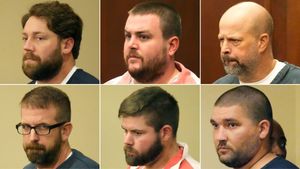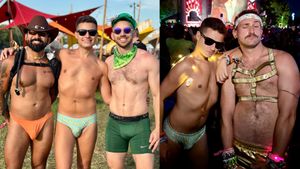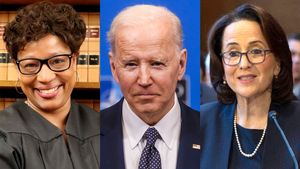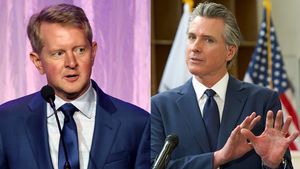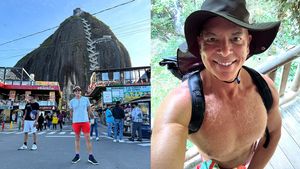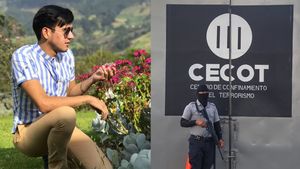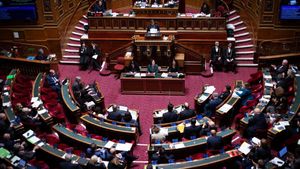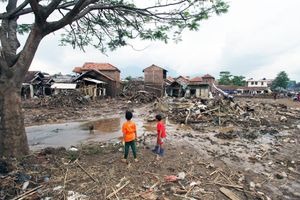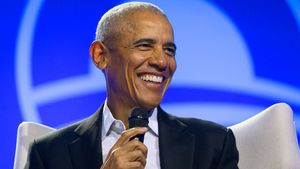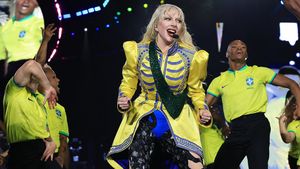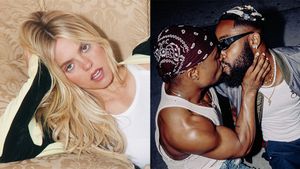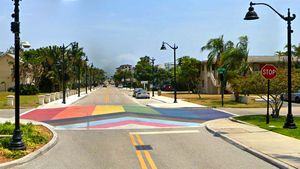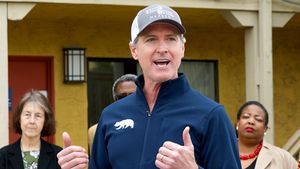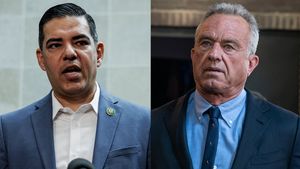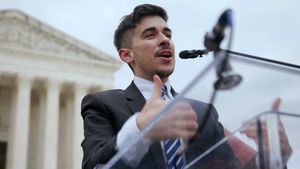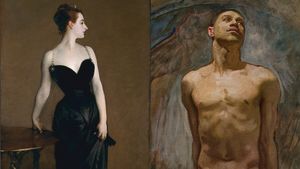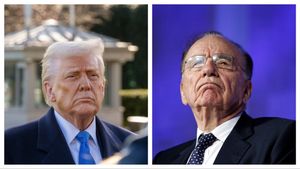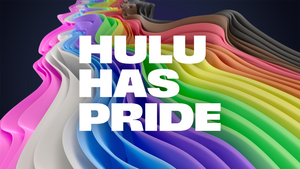
Treatment GuideJust DiagnosedSex & DatingAfrican AmericanStigmaAsk the HIV DocPrEP En EspañolNewsVoicesPrint IssueVideoOut 100
CONTACTCAREER OPPORTUNITIESADVERTISE WITH USPRIVACY POLICYPRIVACY PREFERENCESTERMS OF USELEGAL NOTICE
© 2025 Pride Publishing Inc.
All Rights reserved
All Rights reserved
Scroll To Top
By continuing to use our site, you agree to our Privacy Policy and Terms of Use.
In reviewing the events of the pandemic, HIV Plus reflected on not only why the anti-AIDS movement has continually grown stronger since the first AIDS cases were discovered more than a quarter century ago but also why HIVers today are thriving in their daily lives more than ever before. While there were several parts to the answer, one factor stood out'the men and women who've inspired us, steered us through hard times, and led us to our victories.
Zackie Achmat: Guardian of an Afflicted Nation Achmat is the founder of Treatment Action Campaign, the globally renowned HIV activist group in South Africa. Initially set up in 1998 to focus on access to antiretroviral medications for the poorest of the nation's disproportionately large HIV-positive population, TAC worked to initiate change through a combination of tactics inspired by direct-action groups like ACT UP and those of the antiapartheid movement. It regularly grabbed the media's attention by taking on both the national government and brand-name pharmaceutical companies for not doing more to save the lives of the multitudes of HIVers dying in South Africa each year. As the organization grew beyond a small band of activists into chapters throughout the nation, its campaigns turned to raising public awareness of the disease and to filing lawsuits to gain access to less-expensive generic treatments for uninsured HIVers. Despite TAC's legal victories, the government continued to resist expanding access to antiretrovirals, and so the very public and visible Achmat made a personal decision to refuse the meds he had access to until all HIV-positive South Africans could obtain similar treatments. Despite the government's eventual admission that antiretroviral therapy is cost-effective and its adoption of a national treatment program, South Africa's president and minister of health continue to draw international ire for supporting positions that HIV does not cause AIDS and for putting emphasis on nutrition, for example, as an alternative to anti-HIV therapies. Thus, access to anti-HIV drugs still remains uneven and inadequate. In full recognition of these continuing challenges and persistent opposition, Achmat and TAC continue today in their determined fight for universal HIV treatment access.
Cleve Jones: Vivid Memorialist Four years after helping to cofound the San Francisco AIDS Foundation in 1983, Jones constructed the first panel of what has become one of the most memorable'and emotion-provoking'icons of the pandemic: the Names Project AIDS Memorial Quilt. Almost 20 years later, the quilt has grown to include nearly 80,000 panels memorializing Americans lost to the virus, and international Names Project affiliates have created memorial quilts in 50 other countries. Jones remains a strong advocate for HIVers and tours the country as a public speaker.
Magic Johnson: Nonstereotypical Public Face Though he could have slipped quietly into anonymity and history upon the discovery that he had HIV, Johnson instead became a very public HIV prevention crusader. For the past 17 years he has used his celebrity status to stress that anyone can become infected with the virus'not just members of certain groups'and that through taking care of one's health, a long and fulfilling life after being diagnosed with HIV is still possible. Johnson was still at the height of his career as a National Basketball Association superstar with the Los Angeles Lakers when he publicly announced in 1991 that he was retiring because he'd tested HIV-positive, telling the press that he was going to dedicate his life to battling the disease. Though he returned to pro basketball (twice), he eventually left the sport for good'not because of health issues, but due to stigma. It was other players' misinformed fears that he posed an infection risk that ultimately benched Johnson permanently. Since his retirement, he has taken on the role of respected philanthropist. He formed the Magic Johnson Foundation in 1991 to help support HIV awareness efforts and has also appeared in ads for pharmaceutical manufacturer Abbott Laboratories, which with Johnson and his wife, Cookie, created the 'I Stand With Magic' campaign.
Elizabeth Glaser: Children's Advocate After being infected with HIV via a blood transfusion during the birth of her first child, Ariel, in 1981, Glaser unknowingly transmitted the virus to her daughter through breast-feeding. In 1984, still unaware of her own'or her daughter's'infection, Glaser gave birth to a son, Jake, who also contracted the virus. It wasn't until after Ariel had a series of illnesses in 1985 that the family was tested and became aware of the infections. After Ariel's death in 1988, Glaser, who was married to actor and director Paul Michael Glaser, cofounded the Elizabeth Glaser Pediatric AIDS Foundation to raise public awareness about HIV's impact on children and to demand the development of pediatric medications for the disease. Today, the organization remains a major force in advocating for HIV-positive children and heads up global efforts to educate the public on preventing mother-to-child transmissions of the virus.
Ryan White: Poster Child for Change To say that White's life was turned upside down after receiving an HIV diagnosis when he was just 13'from a blood transfusion he'd received because of his hemophilia'is a vast understatement. Word of his infection spread throughout his hometown of Kokomo, Ind., and when he tried to return to his middle school in 1985 the rampant fears at that time and lack of understanding about how HIV is transmitted led to a petition drive by parents and teachers against his return; he was barred from the school. When the White family successfully sued to have their son reinstated in school, his case'and cause'drew national attention. Although much research was presented to assure that he posed no infection risk to other students or educators, White continued to be ostracized in his community. Some parents formed an alternative school for their children so that they would not have to attend school with White, and he endured ongoing threats of violence. The family eventually moved away from Kokomo after a bullet was fired into their home in 1987. The news of White's trial and ongoing discrimination in his community put the youngster firmly in the public spotlight, with national TV programs and newspapers flocking to tell his story and culminating with the 1989 TV docudrama The Ryan White Story. In 1988, White testified before the National Commission on AIDS, describing the intolerance he'd had to endure: 'I tried to ignore the injustice because I knew the people were wrong. My family and I held no hatred for those people, because we realized they were victims of their own ignorance. We had great faith that with patience, understanding, and education my family and I could be helpful in changing their minds and attitudes around.' Just before his high school graduation in 1990, White died of AIDS-related complications. That same year Congress passed the Ryan White Comprehensive AIDS Resources Emergency Act in his honor, which continues today to fund programs providing care for the nation's uninsured and underinsured HIVers. In a 1993 interview Larry Kramer, considered by many to be the father of AIDS activism, told Playboy, 'I think little Ryan White probably did more to change the face of this illness and to move people than anyone.'
Todd Murray: Youth Visionary At the seasoned age of 23, Murray helped create the young-adult HIV-awareness organization Hope's Voice in 2004'only three years after learning that he had contracted the virus. 'I was part of the first generation to ever live my entire life in a world with HIV,' he says, 'and yet my first education about it came when I found out I was living with the disease. Several months after, I learned that half of all new HIV infections are in people under 25. Why did I feel so alone? Why didn't I take the opportunity to educate myself before my diagnosis? How had I gone through an entire life and not have had any personal connection to the epidemic? Was I going to spend my entire life feeling shame and guilt or to stop living my dreams? Why was the only emotion I related to HIV fear?' With so many questions'and a background in social marketing to give him the tools to start discovering the answers for himself and for others'Murray says he had an awakening: 'Sexual education was disappearing, and we were at a crossroads. I knew that I had two choices: I could live with the way things were or commit my life to making a change. The organization was a direct response to the crisis of the lack of accurate and comprehensive sexual education for young people.' When we first introduced you to Murray in our World AIDS Day supplement in December 2005, it was the year Hope's Voice launched its Road to Hope Tour as part of its 'Does HIV Look Like Me?' campaign, which was designed to give voices to young adult HIVers and put a human face on the youth epidemic. The tour took 20-something HIVers on the first of two 7,000-mile treks to colleges and universities across the nation, where they spoke with their peers and showed that 'HIV does not discriminate,' which Murray says is the group's overriding message. 'HIV affects and can infect people of every age, race, gender, sexual orientation, and economic status,' he says. Since then, he's taken the organization global, creating Hope's Voice International. So far, the group has formed partnerships with activists in Mexico, South Africa, Swaziland, and the United Kingdom to create a worldwide version of the 'Does HIV Look Like Me?' campaign. Later this year, Murray will be prepping to take the campaign to more countries and building an even broader network of young HIVers via the group's website. But such ambitious goals don't come easily. 'We need support. Hope's Voice International continues to struggle to meet the demand. I would like to encourage the readers of HIV Plus to recognize that in order to make a difference in the next 10 years we must stay committed, both emotionally and financially, to this work. The numbers of new young people being infected are staggering. We must commit to reaching those who are at risk and those who have already become infected. Assuming that this is the way it will be is not a mind-set that we should ever have.'
Randy Shilts: Tenacious Investigative Journalist Working in one of the epicenters of the emerging U.S. epidemic in the 1980s, Shilts, a reporter at the San Francisco Chronicle, was one of the first journalists anywhere to recognize the scope of the AIDS crisis and began reporting on the disease full-time. In 1987 his work culminated in the acclaimed book And the Band Played On: Politics, People, and the AIDS Epidemic, an unflinching look at the indifference of President Reagan, the medical establishment, and even some gay people toward the disease, and their collective failure to deal with the developing pandemic quickly and responsibly. Shilts learned that he himself was HIV-positive on the very day in 1987 that he turned in his manuscript for And the Band Played On, according to his obituary in The New York Times; he died at 42 in February 1994. Had it not been for Shilts's book, which spent five weeks on the The New York Times best-seller list and was later made into an HBO movie with an all-star cast, the United States'and perhaps the world'would not have started giving the disease the due concern it demanded. As The Advocate aptly put it in its tribute to Shilts upon his death, '[The book] had an outsize influence on national attitudes and AIDS policy. Suddenly, AIDS was a topic that could not be ignored.'
Pedro Zamora: Immigrant Champion of the Cause After learning he was HIV-positive as a 17-year-old high school junior, Cuba-born Zamora took up the torch of educating other youths about the disease and how to protect themselves. At 19, he received national attention for his work as the subject of a page 1 article in The Wall Street Journal and was subsequently interviewed on national TV by Oprah Winfrey, Phil Donahue, and Geraldo Rivera. He even testified before Congress about the need for explicit HIV education programs, stating, 'If you want to reach me as a young man'especially a young gay man of color'then you need to give me information in a language and vocabulary I can understand and relate to.' But it was his bold decision to try out for'and be cast on'MTV's hit series The Real World: San Francisco that allowed him to show the world the day-to-day realities of living with HIV. During the show's airing in 1994, millions of people watched and learned as Zamora educated his housemates about the virus and also saw his health begin to fail as he struggled with night sweats, weight loss, and pneumonia. In those pre'protease inhibitor years, his health waxed and waned for a few months after taping of the show completed, but a series of opportunistic infections eventually took his life at 22 in November 1994 on the day after the season's final episode aired.
Phill Wilson: Crusader for Minorities After getting his start in AIDS activism in the 1980s, Wilson had become by the 1990s one of the nation's leaders in influencing local and national AIDS policy through a variety of high-profile positions'AIDS coordinator for the city of Los Angeles, a director at AIDS Project Los Angeles, a member of the L.A. County HIV Health Commission, and an appointee to the Health Resources and Services Administration (a division of the U.S. Department of Health and Human Services) AIDS advisory committee. After HIV sidelined him in 1996, soon after the first protease inhibitors were approved, Wilson was feeling robust enough by 1999 to get back in the game, and didn't like the trend he saw among African-Americans. 'We found out as early as 1984 that African-Americans accounted for 25% of AIDS cases and that black women, for example, at that time represented over 50% of the AIDS patients among women,' he says. 'When I looked to see where the greatest need was, it was clear that the place I could best serve was focusing on AIDS's impact on African-Americans.' That's when he founded the Black AIDS Institute. One of its primary functions, Wilson says, is to battle the belief that HIV is a 'white, gay disease,' an assumption that makes it too easy for HIV to continue its rapid spread among African-Americans. In 2006, the year the world marked the 25th anniversary of the discovery of the first AIDS cases, Wilson turned 50. And to this day he's still going strong at the Black AIDS Institute, where he serves as director, fulfilling a vital need to educate the public. 'If we are to stop the AIDS epidemic,' he says of his work, 'we have to raise the HIV science literacy in black America. I think it's getting better, but we still have a long way to go.'
Larry Kramer: Godfather of AIDS Activism Simply put, AIDS activism owes its existence to outspoken'some would say cantankerous'author, playwright, and gay rights pioneer Larry Kramer. As the founder of ACT UP in 1987, Kramer helped coordinate and participate in countless protests demanding'and ultimately gaining'access to experimental anti-HIV drugs, lower prices on existing meds, and speedy development of new treatments. ACT UP's successes led Anthony Fauci, director of the National Institutes of Allergy and Infectious Diseases, to say of Kramer, 'In American medicine there are two eras: before Larry and after Larry.' Kramer also was one of the six cofounders of New York's Gay Men's Health Crisis, launched in 1982 as the world's first AIDS service organization, which continues to be a global leader in the fight against the disease today. Now 73 and completing a new book titled The American People, Kramer talks about his years with ACT UP, today's dearth of activists, and his concerns for the future. Is AIDS activism dead today? Yes. And no. In terms of activity that results in change or in a visible demonstration of our power'that doesn't exist anymore. What was different in the 1980s and 1990s that fueled activism then? Early activism was based, pure and simple, on fear. Without fear, activism doesn't work. And we were scared shitless then. Have we lost that fear or have we simply become too lazy to keep up the fight? I think it's deeper than laziness. The gay population has been invisible and passive since day one. We have never fought with the numbers we have at our disposal. Even ACT UP in its heyday probably didn't include more than 10,000 people coast to coast. It seems like much of AIDS activism today is focused on Africa instead of here at home. Why is that? Because it doesn't involve homosexuals. This country hates homosexuals. People don't want to admit this, but they do. When you look toward the future of AIDS activism, what's one of your biggest concerns? No one wants to be in-your-face like me. Why in this entire plague have there been so few Larry Kramers? Why am I the one everyone turns to'even now? I'm 73 fucking years old, for God's sake! Where is everybody else? Who are our leaders? Where are the young ones? It's totally scary. Click on the link in the Related Articles section on this page to read the full Q&A with Larry Kramer.
From our Sponsors
Most Popular
Lexi Love comes out as HIV+ after Trump deletes federal resources
January 23 2025 11:23 AM
Grindr is reminding us why jockstraps are so sexy and iconic
May 02 2025 5:36 PM
BREAKING NEWS: Trump admin moves to end federal HIV prevention programs
March 18 2025 6:10 PM
Trump's orders prompt CDC to erase HIV resources
January 31 2025 5:29 PM
Celebrating Black History Month with our annual African American issue
February 01 2025 3:28 PM
Tyler TerMeer vows to continue to fight for health care for all
January 28 2025 3:00 PM
Discover the power of Wellness in your life
March 26 2025 12:41 PM
Plus: Featured Video
Latest Stories
Dancer. Healer. Survivor. DéShaun Armbrister is all of the above
July 02 2025 8:23 PM
Two right-wing Supreme Court justices signal they may uphold access to PrEP and more
April 21 2025 4:10 PM
Broadway's best raise over $1 million for LGBTQ+ and HIV causes
April 03 2025 7:15 PM
Plus nominated for 2025 GLAAD Media Award
January 22 2025 12:42 PM
'RuPaul's Drag Race' star Trinity K Bonet quietly comes out trans
December 15 2024 6:27 PM
AIDS Memorial Quilt displayed at White House for the first time
December 02 2024 1:21 PM
BREAKING: Supreme Court rules to save free access to preventive care, including PrEP
June 27 2025 10:32 AM
1985: the year the AIDS crisis finally broke through the silence
June 26 2025 11:24 AM
Trump admin guts $258 million in funding for HIV vaccine research
June 03 2025 3:47 PM
500,000 Children at Risk: PEPFAR Funding Crisis
April 08 2025 3:51 PM
The Talk Season 5 premieres this spring with HIV guidance for the newly diagnosed
March 26 2025 1:00 PM
Jess King is here to help you live your happiest, healthiest life yet
March 24 2025 4:35 PM
A camp for HIV-positive kids is for sale. Here's why its founder is celebrating
January 02 2025 12:21 PM
VIDEO: A man living with HIV discusses his journey to fatherhood
June 10 2025 4:58 PM
HRC holds 'die-in' to protest Trump health care cuts
April 28 2025 2:11 PM
Season 4 of The Switch on resilience & radical self-love returns this spring
March 26 2025 12:20 PM
Gerald Garth is keeping people of color happy and healthy through trying times
March 11 2025 3:38 PM
This long-term HIV survivor says testosterone therapy helped save his life.
December 16 2024 8:00 PM
Ricky Martin delivers showstopping performance for 2024 World AIDS Day
December 05 2024 12:08 PM
Trending stories
Recommended Stories for You


































